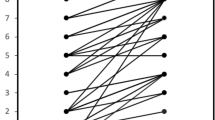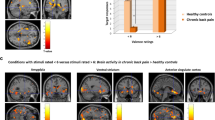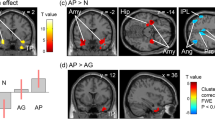Abstract
Brain-centric theories propose that chronic pain is driven and maintained by maladaptive negative emotional learning, with the hippocampus playing a crucial role in the transition from acute to chronic pain. However, little is known about what triggers this maladaptive learning in the first place, especially in the early acute stages following injury. We imaged 110 patients within days of whiplash and mild traumatic brain injury and tested whether hippocampal adaptations impart risk for chronic pain one year later. Patients who went on to develop chronic pain one year later showed increased connectivity between the hippocampus and its posterior network, as well as increased network connectivity across posterior hippocampal network nodes and the amygdala bilaterally. This connectivity was linked to anxiety and increased with time lapse from injury to brain scans. Our findings link rapid hippocampal network reorganization with the development of chronic pain.
This is a preview of subscription content, access via your institution
Access options
Subscribe to this journal
Receive 12 digital issues and online access to articles
$79.00 per year
only $6.58 per issue
Buy this article
- Purchase on SpringerLink
- Instant access to full article PDF
Prices may be subject to local taxes which are calculated during checkout



Similar content being viewed by others
Data availability
After finishing our planned data analyses, the full imaging data will be provided at our data repository, http://www.openpain.org. Until then, data will be shared on reasonable request.
References
Baliki, M. N. & Apkarian, A. V. Nociception, pain, negative moods and behavior selection. Neuron 87, 474–491 (2015).
Leeuw, M. et al. The fear-avoidance model of musculoskeletal pain: current state of scientific evidence. J. Behav. Med. 30, 77–94 (2007).
Vachon-Presseau, E. et al. The emotional brain as a predictor and amplifier of chronic pain. J. Dent. Res. 95, 605–612 (2016).
Plachti, A. et al. Multimodal parcellations and extensive behavioral profiling tackling the hippocampus gradient. Cereb. Cortex 29, 4595–4612 (2019).
Wimmer, G. E. & Büchel, C. Reactivation of single-episode pain patterns in the hippocampus and decision making. J. Neurosci. 41, 7894–7908 (2021).
Vachon-Presseau, E. et al. The stress model of chronic pain: evidence from basal cortisol and hippocampal structure and function in humans. Brain 136, 815–827 (2013).
Apkarian, A. V. et al. Role of adult hippocampal neurogenesis in persistent pain. Pain 157, 418–428 (2016).
Wei, X. et al. Activation of the dorsal, but not the ventral, hippocampus relieves neuropathic pain in rodents. Pain 162, 2865 (2021).
Berger, S. E. et al. Hippocampal morphology mediates biased memories of chronic pain. Neuroimage 166, 86–98 (2018).
Vachon-Presseau, E. et al. Corticolimbic anatomical characteristics predetermine risk for chronic pain. Brain 139, 1958–1970 (2016).
Reckziegel, D. et al. Sex-specific pharmacotherapy for back pain: a proof-of-concept randomized trial. Pain Ther. 10, 1375–1400 (2021).
Mutso, A. A. et al. Reorganization of hippocampal functional connectivity with transition to chronic back pain. J. Neurophysiol. 111, 1065–1076 (2014).
Brodt, S. et al. Fast track to the neocortex: a memory engram in the posterior parietal cortex. Science 362, 1045–1048 (2018).
Lucas, S., Hoffman, J. M., Bell, K. R. & Dikmen, S. A prospective study of prevalence and characterization of headache following mild traumatic brain injury. Cephalalgia 34, 93–102 (2014).
Dai, W. et al. Prevalence of acute stress disorder among road traffic accident survivors: a meta-analysis. BMC Psychiatry 18, 188 (2018).
Kim, E. J., Pellman, B. & Kim, J. J. Stress effects on the hippocampus: a critical review. Learn. Mem. 22, 411–416 (2015).
Kim, J. J. & Diamond, D. M. The stressed hippocampus, synaptic plasticity and lost memories. Nat. Rev. Neurosci. 3, 453–462 (2002).
Himmer, L., Schönauer, M., Heib, D. P. J., Schabus, M. & Gais, S. Rehearsal initiates systems memory consolidation, sleep makes it last. Sci. Adv. 5, eaav1695 (2019).
Iglesias, J. E. et al. A computational atlas of the hippocampal formation using ex vivo, ultra-high resolution MRI: application to adaptive segmentation of in vivo MRI. Neuroimage 115, 117–137 (2015).
Mirescu, C. & Gould, E. Stress and adult neurogenesis. Hippocampus 16, 233–238 (2006).
Zalesky, A., Fornito, A. & Bullmore, E. T. Network-based statistic: identifying differences in brain networks. Neuroimage 53, 1197–1207 (2010).
Vlaeyen, J. W. S. & Linton, S. J. Fear-avoidance and its consequences in chronic musculoskeletal pain: a state of the art. Pain 85, 317–332 (2000).
Hashmi, J. A. et al. Shape shifting pain: chronification of back pain shifts brain representation from nociceptive to emotional circuits. Brain 136, 2751–2768 (2013).
Reckziegel, D. et al. Hippocampus shape deformation: a potential diagnostic biomarker for chronic back pain in women. Pain 162, 1457–1467 (2021).
Wang, J. X. et al. Targeted enhancement of cortical–hippocampal brain networks and associative memory. Science 345, 1054–1057 (2014).
Gilmore, A. W., Nelson, S. M. & McDermott, K. B. A parietal memory network revealed by multiple MRI methods. Trends Cogn. Sci. 19, 534–543 (2015).
Ranganath, C., Heller, A., Cohen, M. X., Brozinsky, C. J. & Rissman, J. Functional connectivity with the hippocampus during successful memory formation. Hippocampus 15, 997–1005 (2005).
Tovote, P., Fadok, J. P. & Lüthi, A. Neuronal circuits for fear and anxiety. Nat. Rev. Neurosci. 16, 317–331 (2015).
Costa, M. et al. Aversive memory formation in humans involves an amygdala–hippocampus phase code. Nat. Commun. 13, 6403 (2022).
Zhang, H. et al. Awake ripples enhance emotional memory encoding in the human brain. Nat. Commun. 15, 215 (2024).
Gould, E. & Tanapat, P. Stress and hippocampal neurogenesis. Biol. Psychiatry 46, 1472–1479 (1999).
Girgis, F., Pace, J., Sweet, J. & Miller, J. P. Hippocampal neurophysiologic changes after mild traumatic brain injury and potential neuromodulation treatment approaches. Front. Syst. Neurosci. 10, 8 (2016).
Henckens, M. J. A. G., Hermans, E. J., Pu, Z., Joëls, M. & Fernández, G. Stressed memories: how acute stress affects memory formation in humans. J. Neurosci. 29, 10111–10119 (2009).
Zhou, Y. et al. Early altered resting-state functional connectivity predicts the severity of post-traumatic stress disorder symptoms in acutely traumatized subjects. PLoS ONE 7, e46833 (2012).
Fitzgerald, J. M. et al. Hippocampal resting-state functional connectivity forecasts individual posttraumatic stress disorder symptoms: a data-driven approach. Biol. Psychiatry Cogn. Neurosci. Neuroimaging 7, 139–149 (2022).
Hruschak, V. & Cochran, G. Psychosocial predictors in the transition from acute to chronic pain: a systematic review. Psychol. Health Med. 23, 1151–1167 (2018).
Ashar, Y. K. et al. Effect of pain reprocessing therapy vs placebo and usual care for patients with chronic back pain: a randomized clinical trial. JAMA Psychiatry 79, 13–23 (2022).
Strange, B. A., Witter, M. P., Lein, E. S. & Moser, E. I. Functional organization of the hippocampal longitudinal axis. Nat. Rev. Neurosci. 15, 655–669 (2014).
Poppenk, J., Evensmoen, H. R., Moscovitch, M. & Nadel, L. Long-axis specialization of the human hippocampus. Trends Cogn. Sci. 17, 230–240 (2013).
Cooper, R. A. & Ritchey, M. Cortico-hippocampal network connections support the multidimensional quality of episodic memory. eLife 8, e45591 (2019).
Ranganath, C. & Ritchey, M. Two cortical systems for memory-guided behaviour. Nat. Rev. Neurosci. 13, 713–726 (2012).
Ezama, L., Hernández‐Cabrera, J. A., Seoane, S., Pereda, E. & Janssen, N. Functional connectivity of the hippocampus and its subfields in resting‐state networks. Eur. J. Neurosci. 53, 3378–3393 (2021).
Niu, X. et al. Disruption of periaqueductal grey-default mode network functional connectivity predicts persistent post-traumatic headache in mild traumatic brain injury. J. Neurol. Neurosurg. Psychiatry 90, 326–332 (2019).
Seymour, B., Crook, R. J. & Chen, Z. S. Post-injury pain and behaviour: a control theory perspective. Nat. Rev. Neurosci. 24, 378–392 (2023).
Bosak, N. et al. Brain connectivity predicts chronic pain in acute mild traumatic brain injury. Ann. Neurol. 92, 819–833 (2022).
Price, T. J. et al. Transition to chronic pain: opportunities for novel therapeutics. Nat. Rev. Neurosci. 19, 383–384 (2018).
Kuperman, P. et al. Psychophysic–psychological dichotomy in very early acute mTBI pain: a prospective study. Neurology 91, e931–e938 (2018).
Branco, P. et al. Structural brain connectivity predicts early acute pain after mild traumatic brain injury. Pain 164, 1312–1320 (2023).
Esteban, O. et al. fMRIPrep: a robust preprocessing pipeline for functional MRI. Nat. Methods 16, 111–116 (2019).
Smith, S. M. Fast robust automated brain extraction. Hum. Brain Mapp. 17, 143–155 (2002).
Avants, B. B. et al. A reproducible evaluation of ANTs similarity metric performance in brain image registration. Neuroimage 54, 2033–2044 (2011).
Behzadi, Y., Restom, K., Liau, J. & Liu, T. T. A component based noise correction method (CompCor) for BOLD and perfusion based fMRI. Neuroimage 37, 90–101 (2007).
Sämann, P. G. et al. FreeSurfer‐based segmentation of hippocampal subfields: a review of methods and applications, with a novel quality control procedure for ENIGMA studies and other collaborative efforts. Hum. Brain Mapp. 43, 207–233 (2022).
Power, J. D. et al. Methods to detect, characterize, and remove motion artifact in resting state fMRI. Neuroimage 84, 320–341 (2014).
Yarkoni, T., Poldrack, R. A., Nichols, T. E., Van Essen, D. C. & Wager, T. D. Large-scale automated synthesis of human functional neuroimaging data. Nat. Methods 8, 665–670 (2011).
Winkler, A. M. et al. Non‐parametric combination and related permutation tests for neuroimaging. Hum. Brain Mapp. 37, 1486–1511 (2016).
Biswal, B. B. et al. Toward discovery science of human brain function. Proc. Natl Acad. Sci. USA 107, 4734–4739 (2010).
Abel, T., Havekes, R., Saletin, J. M. & Walker, M. P. Sleep, plasticity and memory from molecules to whole-brain networks. Curr. Biol. 23, R774–R788 (2013).
Acknowledgments
We thank all members of the Apkarian lab for their feedback on the manuscript. This work was supported by the Office of the Assistant Secretary of Defense for Health Affairs under award W81XWH-15-1-0603 to D.Y. and A.V.A. Opinions, interpretations, conclusions, and recommendations are those of the authors and are not necessarily endorsed by the Department of Defense. This work was further supported by National Institutes of Health grant P50 DA044121 and grant R01AR074274, both to A.V.A.
Author information
Authors and Affiliations
Contributions
D.Y., Y.G., and A.V.A. designed the study, coordinated data collection, and obtained funding. N.B. collected data. P.B. performed imaging analyses. P.B. and A.D.V. performed statistical analyses. P.B. drafted the manuscript. P.B., N.B., A.D.V., and A.V.A. further edited and revised the manuscript. All authors discussed the results, contributed to, and approved the final manuscript.
Corresponding author
Ethics declarations
Competing interests
The authors declare competing interests.
Peer review
Peer review information
Nature Mental Health thanks Jacklynn Fitzgerald and the other, anonymous, reviewer(s) for their contribution to the peer review of this work.
Additional information
Publisher’s note Springer Nature remains neutral with regard to jurisdictional claims in published maps and institutional affiliations.
Supplementary information
Supplementary Information
Supplementary Figs. 1–9, Tables 1–8, and Methods.
Rights and permissions
Springer Nature or its licensor (e.g. a society or other partner) holds exclusive rights to this article under a publishing agreement with the author(s) or other rightsholder(s); author self-archiving of the accepted manuscript version of this article is solely governed by the terms of such publishing agreement and applicable law.
About this article
Cite this article
Branco, P., Bosak, N., Vigotsky, A.D. et al. Hippocampal functional connectivity after whiplash injury is linked to the development of chronic pain. Nat. Mental Health 2, 1362–1370 (2024). https://doi.org/10.1038/s44220-024-00329-8
Received:
Accepted:
Published:
Issue Date:
DOI: https://doi.org/10.1038/s44220-024-00329-8
This article is cited by
-
The causal role of brain circuits in osteoarthritis pain
Nature Reviews Rheumatology (2025)



